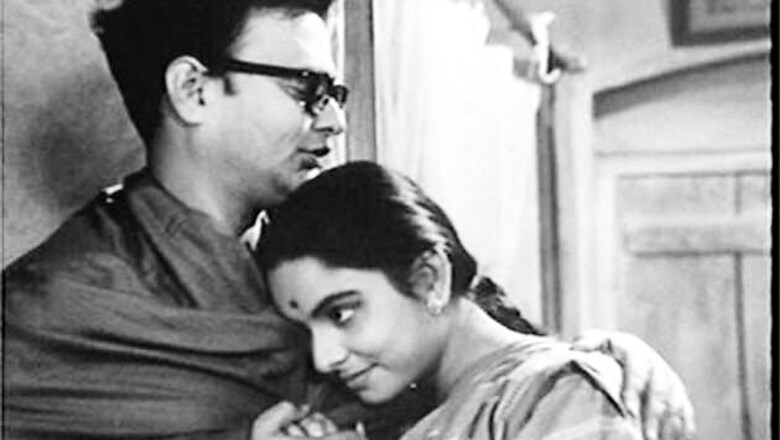
views
New Delhi: Thanks to various scholarly researches and internet, Satyajit Ray continues to escalate the ladder of respect. The younger generation might not have seen many of his films but they don't dare to criticise Ray's films just for the sake of criticising. It has probably happened in last fifteen years when intellectuals started to interpret Ray's films in a new light and tested their compatibility with the modern times. This process helped some of Ray's films in gaining the much deserved respect which they were not given earlier. 'Mahanagar' is one such film and what could be a better time to reconsider its worth than the 50th year of its release. The film was first screened in 1963.
'Mahanagar' (The Big City) featured Anil Chatterjee, Madhabi Mukherjee and Jaya Bhaduri in the lead roles, who played Subrata, Aarti and Bani in a city which was not purely a jungle of concrete yet. The film released in UK after four years but managed to fetch praise from critics such as Roger Ebert and Pauline Kael.
There are scholars who have always been interested in drawing a comparison between Ray and De Sica. Several theories have been propagated on how the city plays a character in 'Bicycle Thieves', and one of the prominent among them is the idea of city being a capitalist monster that interchanges peace with money. Basically, the consumerist approach of the society gives rise to mindless industrialisation which further evokes a sense of competition that culminates on an intra-personal battle of survival. As accused by some liberal thinkers, Vittorio De Sica probably doesn't take a stand. In India, it was Satyajit Ray who reinstated the ideas shown in 'Bicycle Thieves', and one film that demonstrates it better than others is 'Mahanagar'.
The Calcutta society of early 1960s was laying the bricks to build a prosperous future but it was happening at a cost. The condition was certainly not like these days when talented professionals are on a constant look out for chances to get rid of Kolkata. It is possible that Ray was looking at Kolkata as a potential business hub of future which would preserve its cultural diversity. The presence of an Anglo-Indian character supports our belief. Further, the cause of women emancipation has been strongly advocated in 'Mahanagar' which describes a certain type of futuristic vision. Tough the Kolkata society was better than other open cities when it came to the treatment of women but it had to learn and understand a lot. Today, the role played by Madhabi Mukherjee (Aarti) gets reflected in millions of young girls.
The theme looked simple on the outset but was actually a complex one. What the government couldn't do despite spending tons of money, was done by inflation in a swift move. The rising prices and constantly increasing need of money restricted the patriarchal society from keeping its chain closed on women. In order to survive, the man of the family had to let loose the alternatively skilled woman.
Billy Wilder's 'The Apartment' released in 1960 and the story, in a way, gets an extension in 'Mahanagar' of 1963. The characters are thirsty for soft emotions in 'The Apartment' while in 'Mahangar' they are looking for solidarity, a step ahead. How many times do you see two great filmmakers finding a reflection in each other's work?
Do you think we need to discuss about the relevancy of 'Mahangar' as women empowerment is more needed than anything else today. What else do you want from a film which hit the screens 50 years ago!



















Comments
0 comment